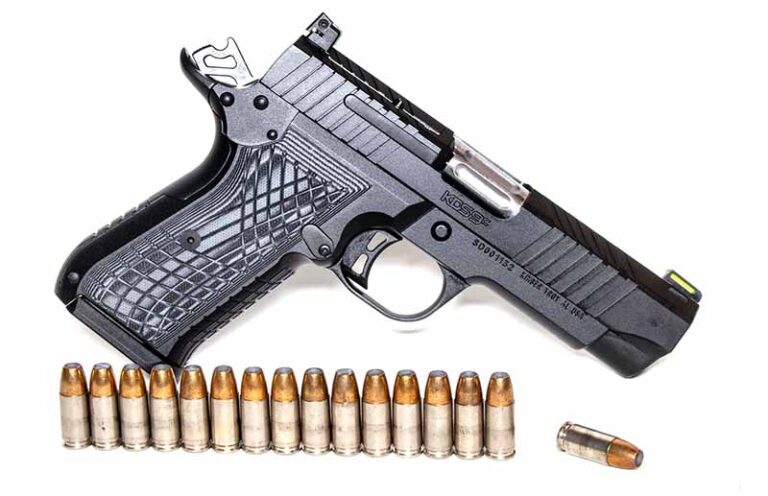
The author tests the Kimber KDS9C, a modern interpretation of the classic 1911.
In 2017, I wrote an article on the then-new Wilson Combat EDC X9 pistol for this magazine. I declared that pistol the best ever made. Like a $10 donut, you pay the price for the excessive watering in your mouth and, even after thousands of rounds, it still tastes just as good as the first bite. I still hold that view, but after a week of testing the new Kimber KDS9C, I believe it’s more like a $7.50 donut. It may not be everything the EDC X9 is, but it’s pretty close.
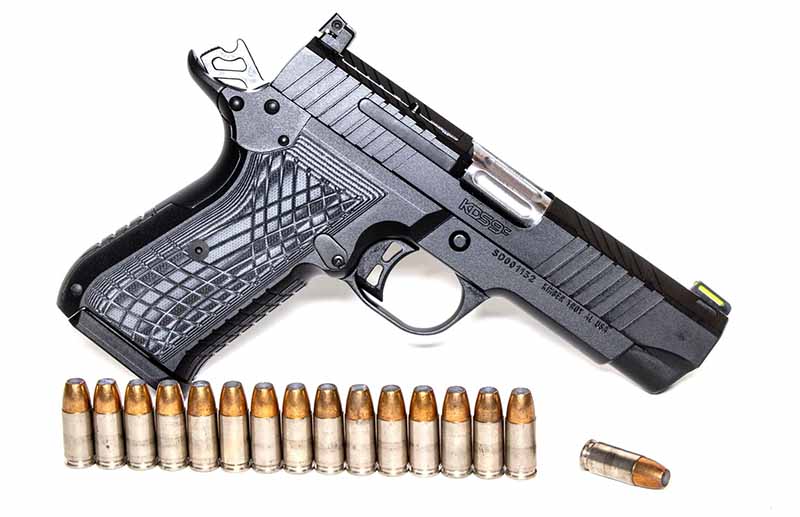
Kimber’s literature states that the KDS9C is the result of a ground-up development to provide a personal protection masterpiece. It’s clear, however, that Wilson Combat’s EDC X9 provided some inspiration. I don’t think that’s a bad thing: If you want to build the best pistol you can, it’s a good idea to emulate what’s arguably the best pistol ever made, and firearms designers have been doing this since firearms have been being designed. Most importantly, what Kimber has been able to do is provide a pistol that’s very similar to the EDC X9 at less than half the price.
The Details That Really Matter
The KDS9C has the 1911 look and utilizes the same linked-barrel, single-action operating system controlled by a manual thumb safety. But the KDS9C’s barrel is ramped, and the pistol doesn’t have a barrel bushing. Instead, the heavily fluted, 4.09-inch stainless-steel barrel, with its 20-degree crown, is perfectly fitted to the inside of the slide. And, the recoil spring plug is reversed so that it caps the 16.9-pound spring, but it inserts from the rear of the slide.
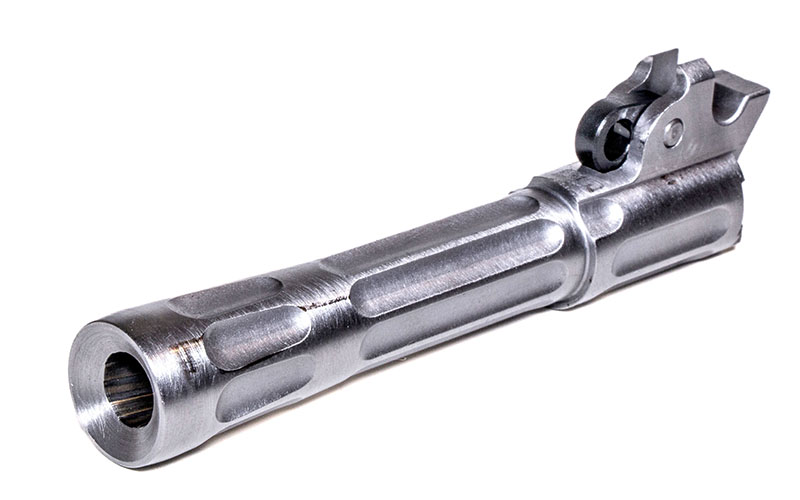
You don’t need a bushing wrench to field-strip this pistol; you simply retract the slide so that the notch is aligned with the slide stop and pull the slide stop out just as you do with a traditional 1911. Once the slide and frame are separated, you remove the recoil spring and spring plug, and then slide the barrel out the front of the slide.
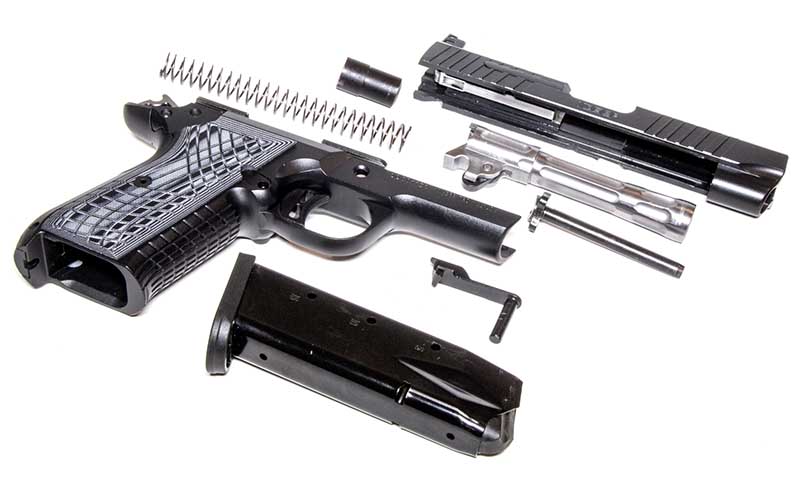
The slide is what’s known as a tri-top. Forward of the ejection port, it’s grooved up to the rear of the dovetailed fiber-optic front sight. Behind the ejection port, there’s an optics plate that extends all the way to the rear sight, which actually holds it in place. Both the rear sight and the optics plate are a bit different from what is commonly seen on modern pistols: The rear sight is rather tall so that it can co-witness with a miniature red-dot, and it’s adjustable for elevation. (For windage adjustment, you’ll need to drift the front sight with a sight pusher.) But instead of the sight being dovetailed into the slide, it’s held in place by two screws that come up from the bottom of the slide. Once the rear sight has been removed, the optics plate comes off.
To fit a miniature reflex sight to the KDS9C, you’ll need a base plate that’s available from Kimber and comes with the RMSC/Holosun-K footprint. After installation, you’ll also need a new and taller front sight. You can return your slide to Kimber for the installation of the taller front sight, or you can order the front sight and attempt it yourself. However, the KDS9C owner’s manual states, “Please do not attempt to drift the front sight with a punch and hammer, as damage may occur, which will not be covered under warranty.”
The optics compatibility of the KDS9C is innovative and well-engineered; however, simply providing the pistol with a front sight of the proper height might have made more sense—tall front sights are not a bad thing, even without a miniature reflex sight installed.
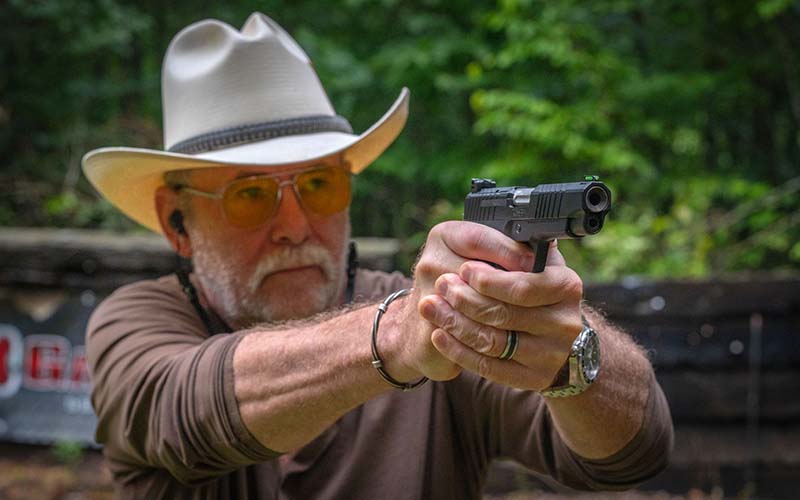
The slide also has deep and wide grasping grooves, and it’s fitted with an external extractor. Also, the bottom of the nose/front of the slide is cut at an angle and gives the pistol a rakish appearance. The profile reminds me of the old 1968-era Steyr GB pistol, and of a 2009-era custom 1911 called the Gaboon that was offered for a short time by LST, a custom maker out of West Virginia. The Gaboon also utilized a reverse recoil spring plug.
Like A 1911, But Different
The KDS9C’s frame is where you see the real departure from a conventional 1911. This is a wide-body frame that feeds from proprietary Kimber magazines that hold 15 rounds. It has a reversible—oval instead of round—magazine release button, large crosshatch grooving on the front strap and an undercut trigger guard. The most notable departure is the lack of a grip safety. However, there’s still a mainspring housing, and there’s a deep beavertail tang in place of the grip safety.
The butt of the grip is radiused at the rear and has a bit of flare at the bottom front. It’s also cut out to accept the baseplate of the magazine. The grip is capped off with attractive gray G10 panels, and it feels very good in-hand. It’s also shaped to prevent your little finger, or the fatty bottom part of your hand, from being pinched when a magazine is inserted. All the sharp edges on this pistol seem to have been radiused, emulating what some custom makers call a “carry bevel package,” to keep from chewing away at the hide on your hands.
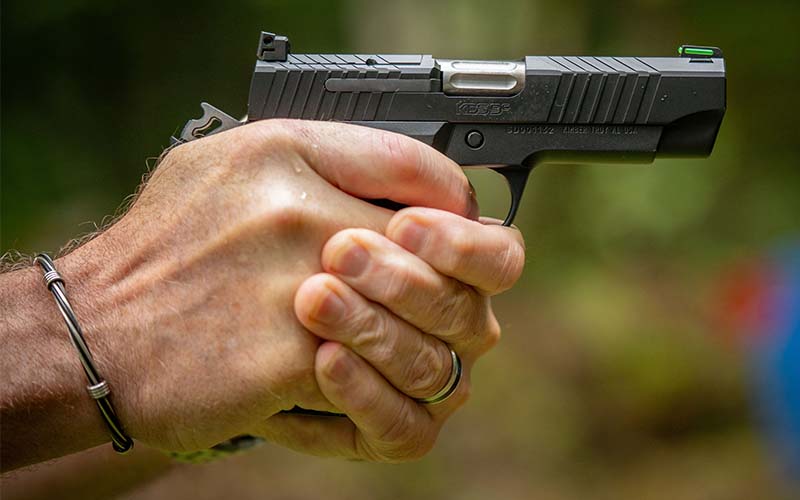
However, one of my two nitpicking complaints was the thumb safety. Though it was sized right, positioned perfectly and operated with the ideal amount of on and off force, the very tip of the thumb safety stands a bit proud, just enough to spike into the pad of your thumb, especially if you like to keep downward pressure on the thumb safety when you shoot.
My other bit of nitpicking was with the trigger. The trigger pull was smooth and consistent, releasing the sear at about 3.5 pounds. However, unlike most 1911 triggers, the serrated and ventilated trigger on the KDS9C doesn’t extend to the very bottom of the trigger guard—there’s a minute gap at the bottom and I could feel the bottom tip of the curved trigger face gouging into my trigger finger. Not so much that you’d notice it after firing several magazines, but after about 300 rounds there was a bit of tenderness to the pad of my trigger finger. This may or not be an issue for you, but when I’m hammering a target, my trigger finger sometimes glides along the bottom inside face of the trigger guard.
In The Holster
The KDS9C pistol fit perfectly in Galco’s Yaqui Slide, Avenger and Royal Guard 2.0 holsters. Unloaded, the pistol weighs 28.2 ounces, 1.4 ounces less than the Wilson Combat EDC X9, and with a magazine full of 15 rounds of 115-grain 9mm ammunition, the pistol weighs 34.6 ounces, which is only about 4.5 ounces more than a fully loaded Glock 19. The thick grip makes the pistol a tad more difficult to conceal than a standard 1911, but with a high-quality holster like the Galco Royal Guard 2.0, the pistol disappears under an untucked shirt.









